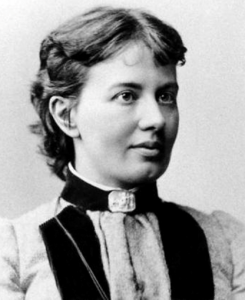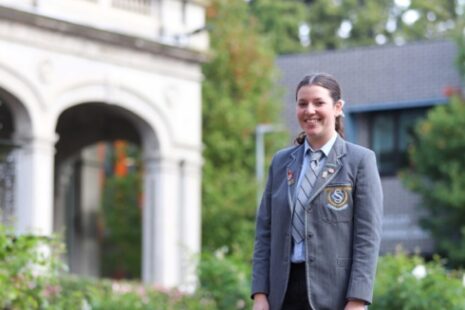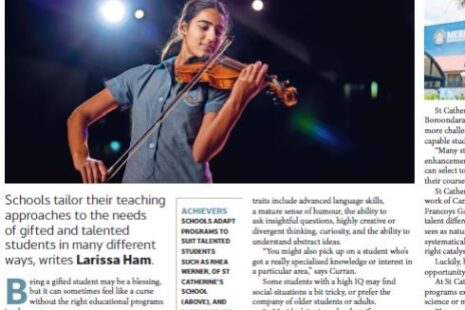Sofya Kovalevskaya – a woman pioneer

 The name Sofya Kovalevskaya is not one that rolls off the tongue nor one that comes to mind when we look back at women whose stories inspire us. Despite adversity and discrimination from the scholars of her time, Kovalevskaya was eventually recognised for her talent and her pioneering work, and appointed as a professor in Mathematics at the University of Stockholm – the first woman to do so. Her work mainly focussed on the theory of differential equations which led to what is now known as the Cauchy-Kovalevsky theorem for analytic partial differential equations. Kovalevskaya was also a prolific writer and an advocate for women’s rights in the 1800s.
The name Sofya Kovalevskaya is not one that rolls off the tongue nor one that comes to mind when we look back at women whose stories inspire us. Despite adversity and discrimination from the scholars of her time, Kovalevskaya was eventually recognised for her talent and her pioneering work, and appointed as a professor in Mathematics at the University of Stockholm – the first woman to do so. Her work mainly focussed on the theory of differential equations which led to what is now known as the Cauchy-Kovalevsky theorem for analytic partial differential equations. Kovalevskaya was also a prolific writer and an advocate for women’s rights in the 1800s.
Sofya Krukovsky Kovalevskaya was born in 1850 into an affluent, noble Russian family. Also known as Sonya, she was interested in mathematics from a very young age. She was educated by tutors and governesses at her family estate. Her uncle, Pyotr Krokovsky is credited as being her first mentor and one that fed her curiosity. He relished in the opportunity to discuss many concepts and abstractions with her. Those that would meet Kovalevskaya were impressed with her innate capabilities and her passion for mathematics – it is said that as a young girl she asked her father to paper her bedroom walls with pages of lecture notes on differential and integral calculus!
It soon became apparent to those around Kovalevskaya that she had exhausted all learning avenues at home and that she needed to travel abroad to nurture her talent. Women in 1869 were not to travel out of Russia without being accompanied by a husband or their father. Kovalevskaya’s ambition was to study mathematics and natural sciences in Germany, so she soon entered a marriage of convenience at the age of eighteen with Vladamir Kovalevsky, a young palaeontology student. She and Vladamir moved to Germany in 1869.
Upon arrival, Kovalevskaya was politely informed that she would not be enrolled in courses as University was not a place for young women. Eventually, through great persistence and many requests to the University’s authorities, Kovalevskaya was permitted to attend lectures and seminars in physics and mathematics. Under the watchful eye of Karl Weierstrass, a great mathematician of the time, and the first to truly take her seriously, Kovalevskaya produced three papers in the hopes of being awarded a degree. The first of these, “On the Theory of Partial Differential Equations” was published in Crelle’s journal, a significant honour for an unknown mathematician. The other two publications discussed the dynamics of Saturn’s rings and elliptical integrals.
With the support of Weierstrass, Kovalevskaya was granted a Ph.D in 1874 from the University of Gottingen. Despite her brilliance and her qualifications, Kovalevskaya struggled to gain the attention and the respect of other mathematicians and would not be considered in academia; her gender and age were major handicaps. Teaching arithmetic to elementary school girls was the only employment she could secure. Disillusioned and depressed, Kovalevskaya and her husband returned to Russia. She abandoned her mathematical work for six years, and instead devoted her time to writing fiction, theatre reviews and science articles. In this time, the couple had a daughter and ventured into small business.
In 1880, Vladamir passed. Overcome by grief and financial desperation, Kovalevskaya fell back into the arms of her first love, mathematics. Her new discussion paper on Abelian integrals drew great praise and attention. In 1883, a former acquaintance convinced her to make a submission for a position to lecture at the University of Stockholm. This temporary appointment grew into greater recognition of her brilliance. Within no time, Kovalevskaya was elevated to the position of full professor in mathematics at the University of Stockholm. In addition to this recognition of her talent, Kovalevskaya was enlisted as the editor of Acta Mathematica and appointed the Chair of Mechanics at the University. Showing intellectual dexterity, she also co-wrote the aptly named play The Struggle for Happiness.
In 1888, after years of struggling to gain the attention of many, her most important work on “The Rotation of a Solid Body about a Fixed Point” received acknowledgement. Prior to Kovalevskaya’s publication, the only solutions for motion of a rigid body about a fixed point had only discussed cases where the body in question was symmetric. However, Kovalevskaya’s work addressed and discussed the implications for a fixed unsymmetrical body. This work, and subsequent periodicals were ground-breaking. This prompted new discussion amongst her colleagues and provided the impetus for future discoveries. In 1889, Kovalevskaya finally received credit for her extraordinary work in her own country by being elected as a corresponding member of the Imperial Academy of Sciences. Interestingly, the rules for election to this position were amended to allow women to these positions following her appointment.
In 1891, Sofya Kovalevskaya succumbed to illness and died at the age of 41. Kovalevskaya was a courageous and tenacious mathematician who overcame prejudice amongst academic circles. Her pioneering work in an almost exclusively male-dominated field was eventually recognised and acclaimed.
Perhaps her greatest legacy, however, is her lasting influence in Mathematics and the Sciences. This story also serves to show us that women do have a place in STEM.





